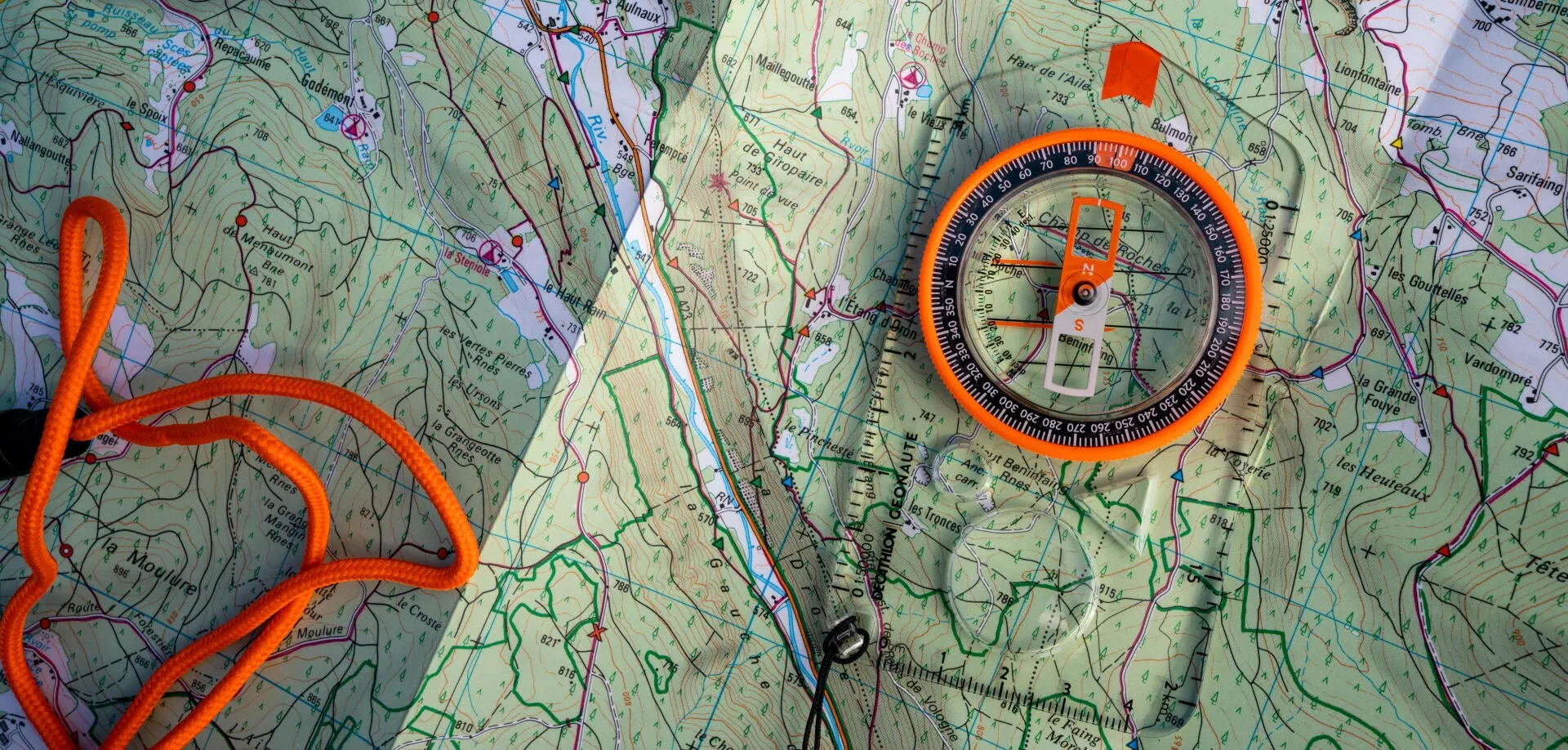Have you ever felt the pull of the unknown, the yearning to venture beyond the well-trodden path and discover what lies hidden around the next bend? For centuries, humans have relied on the stars, the sun, and the trusty compass to guide their explorations. Today, while GPS reigns supreme, there’s a certain magic, a primal connection to the earth, that comes with navigating by compass alone.
But for beginners, the world of compasses can seem like a tangled web of jargon and confusing features. Fear not, aspiring adventurers! This guide is your compass to the compass world. We will introduce the best compasses for beginners that we have thoroughly evaluated through techniques and long trips. Don’t worry, nationalparkshops’s team is confident to bring you the most comprehensive list!
How to choose the right Compasses for Beginners?
Choosing the right compasses for beginners depends on your purpose and navigation skills.
Most users will benefit from a baseplate compass, while orienteers might prefer lighter thumb compasses. For precise navigation in tactical situations, mirror or lensatic compasses are common.
Compass Types:
- Button Compass: Inexpensive and compact, useful mainly in survival scenarios for basic direction.
- Baseplate Compass: Common for outdoor activities; works well with maps for planning and emergencies.
- Orienteering Compass: Designed for quick use while moving; ideal for competitive events but less suited for hiking.
- Mirror Compass: Features a mirror for simultaneous sighting and navigation; also useful for signaling.
- Lensatic Compass: Consists of three parts for accurate directional reading; includes a protective cover.
Compass Features
Features vary by compass type, particularly in baseplate compasses. Understanding these features is essential for proper usage.
- Bezel: Should be marked in degrees, easy to read, and rotate smoothly with good grip.
- Needle and Capsule: The needle should easily point north and settle quickly within a clear, filled capsule marked with orientation aids.
- Baseplate: Should have a Romer scale and distance markings matching your map’s scale; ideally includes a magnifier for detail.
- Lume: Luminescent markings aid navigation in low light; advanced models may use tritium for better visibility.
Depending on the purpose of use, you can choose the type of compass that suits you.
Best Overall: SUUNTO M-3 D Leader Compass ($65.00 on Amazon)
- Material: Plastic
- Item Weight: 46 Grams
- Product Dimensions: 7″L x 3.75″W
- Special Feature: Portable
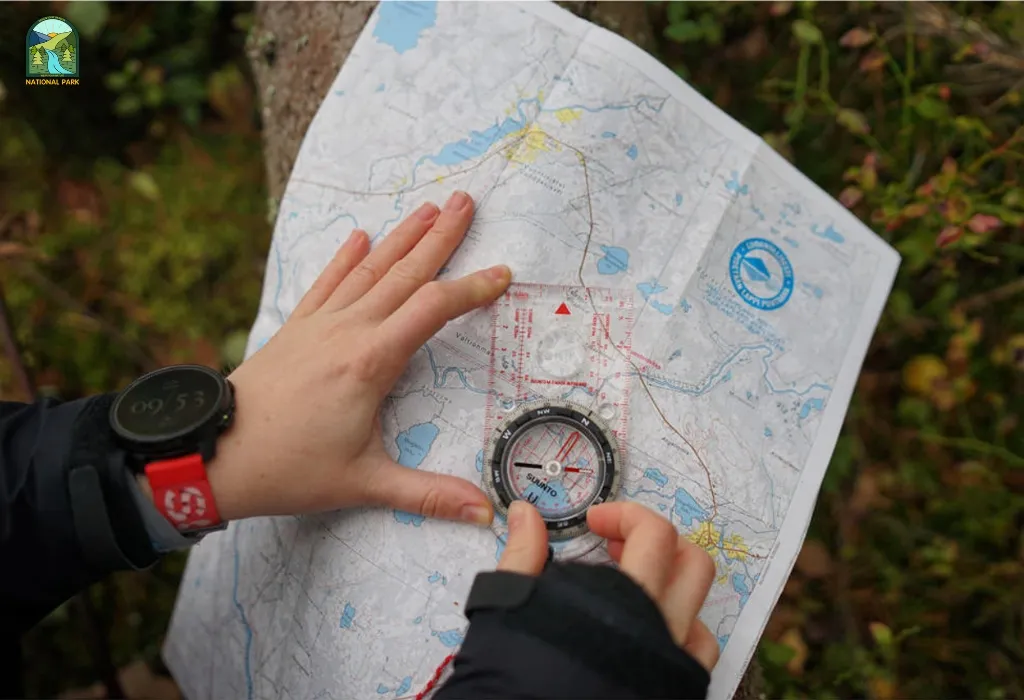
SUUNTO produces a wide range of compasses, and the M-3 D Leader hiking compass ($65) represents a significant upgrade to a highly accurate navigation instrument for those seeking enhanced precision.
They are compasses for beginners, and are both straightforward and efficient, featuring all the essentials for navigation without any unnecessary extras. Designed for hiking, the M-3 D Leader is favored by backpackers and hunters due to its reliability and sturdy construction.
It incorporates both metric and imperial scales and is calibrated for use in the Northern Hemisphere, with 2-degree intervals. The adjustable declination feature is easy to modify, yet secure enough to maintain its setting while on the move. The baseplate includes a magnifying lens and luminescent markings, making it user-friendly on maps even in dim conditions. Additionally, the detachable locking lanyard helps keep it easily accessible and reduces the risk of dropping it while traversing rough terrain.
Best Budget: Silva Expedition Type 4 Compass ($43.97 on Amazon)
- Material: Acrylic
- Item Weight: 0.04 Kilograms
- Product Dimensions: 13.78″L x 9.84″W
- Special Feature: Glow In The Dark, Compass

Silva’s Expedition Type 4 is considered the ultimate baseplate compass, suitable for a range of activities and global adventures. Its lightweight design makes it comfortable to hold, and it features an oil-damped needle designed specifically for the northern hemisphere (with options for the magnetic equator and magnetic south). The orienting arrows, direction of travel arrow, and degree markings on the dial are all distinct and easy to read, as are the Romer scales on the baseplate, available in 1:25k, 1:40k, and 1:50k.
The bezel indicates the four main compass directions along with numeric increments of 20 degrees, and it includes hash marks every 2 degrees. Additionally, there is a declination scale within the capsule that you need to remember to use when accounting for magnetic declination if necessary. The bezel rotates effortlessly, though it does not have the easy-grip rubberized housing found in some other Silva models. Furthermore, these compasses for beginners include luminescent markings for visibility in low-light conditions.
Most universal use: Skylety Navigation Compass
- Material: Acrylic
- Manufacturer: Skylety
- Product Dimensions: 4.53″L x 2.17″W
- Special Feature: Adjustable
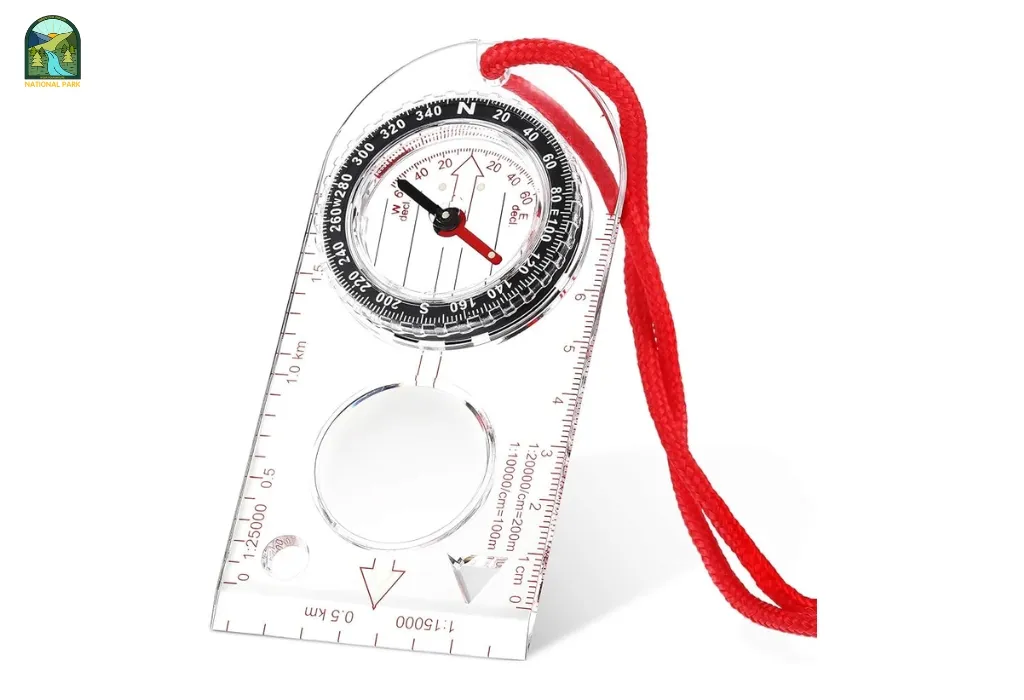
GPS is a remarkable tool. However, in isolated areas, GPS signals may be unavailable, making a compass a reliable alternative. We found the Skylety to be an outstanding choice for travelers exploring both the northern and southern hemispheres because it can be adjusted for either location.
This compass streamlines the process and minimizes mistakes with its tool-free declination adjustment, enabling the needle to align with magnetic north while the bezel displays an offset bearing. The degree measurement on the bezel accounts for declination, eliminating the need for calculations. These compasses for beginners feature one-degree azimuth ring markings, which is uncommon for compasses in this price category, as well as Romer scales on the baseplate.
Best compass for beginners: Highlander Deluxe Map Compass
- Graduations: 2 Degree, 10 Degree, 20 Degree
- Manufacturer: Highlander Outdoor Import
- Item Weight: 1.76 ounces
- Special Feature: Portable

This affordable baseplate compass is likely to appeal to budget-conscious hikers as well as those with limited funds. It features baseplate markings in millimeters and inches, along with scale measurements of 1:50k and 1:25k, making it compatible with Ordnance Survey maps. The magnifying lens also helps in reading place names, contours, spot heights, and recognizing landscape features.
In our testing, we found the thick needle to be less refined or accurate than thinner needles, but it still effectively points north, which is the key function. It’s crucial to ensure these compasses for beginners are completely level for accurate readings. However, it performed its purpose well in the hills, and given the price, we have no significant complaints.
Best Handheld Compass: Cammenga Tritium Lensatic Compass 3H ($109.99 on Amazon)
- Material: Copper
- Manufacturer: Cammenga
- Item Package Dimensions L x W x H: 6.34 x 4.49 x 1.85 inches
- Special Feature: Waterproof
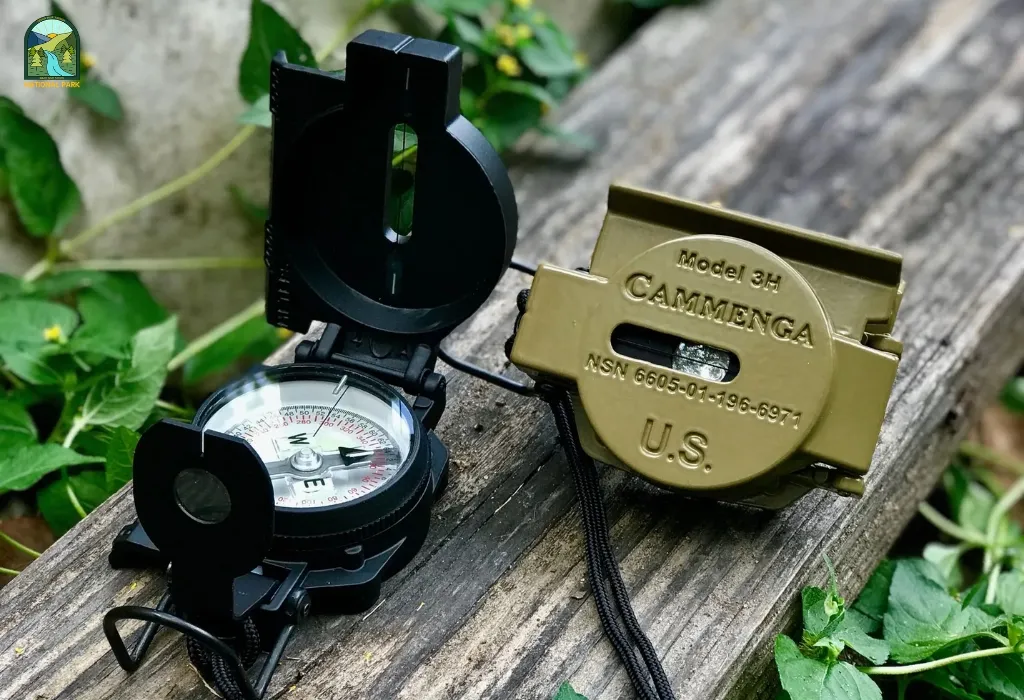
I have been using this compass for a year, but I’ve also experimented with a phosphorescent version for a while. I mainly rely on the 3H for navigation during darker periods as we head to lookout points for early morning calls. I also take it with me on hikes and walks to maintain my skills, and I appreciate lensatic compasses for navigation. When they are well-made, these compasses for beginners are both precise and reliable. My go-to compass is the K & R Meridian Pro, but the glowing tritium in the 3H is handy for nighttime or low-light travel.
Silva NOR Thumb Compass ($49.39 on Amazon)
- Material: Gummi
- Item Weight: 0.03 Kilograms
- Special Feature: Portable
- Rating: 4.5/5 on Amazon
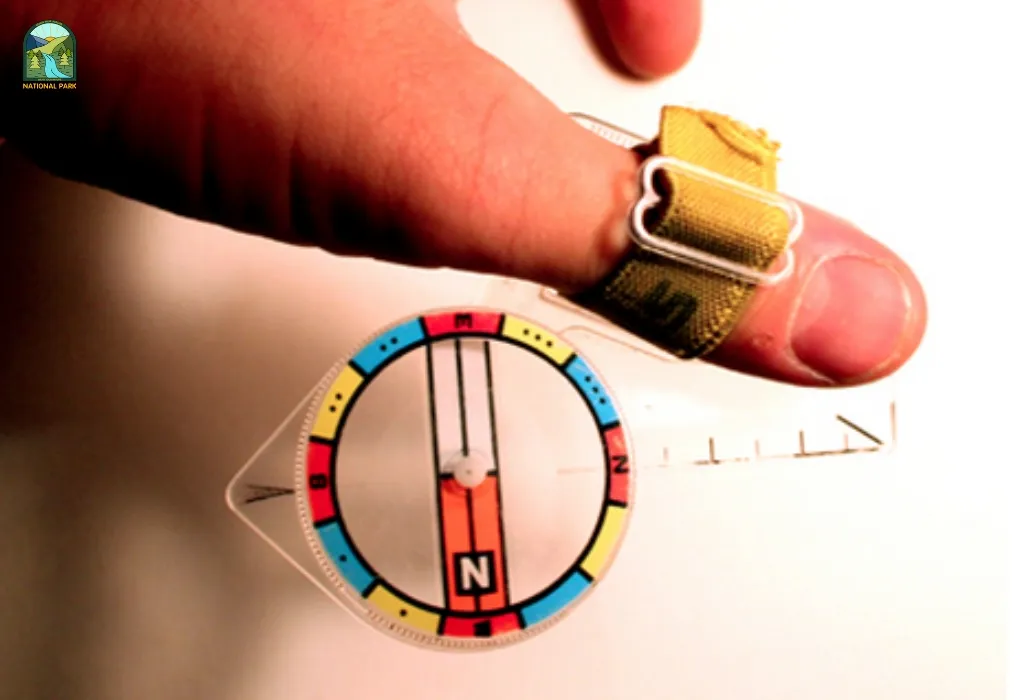
A transparent thumb compass that is ideal for orienteering and adventure racing. It is suitable for beginners in orienteering, though seasoned users might opt for a needle that offers more stability.
Thumb compasses generally enhance and expedite the navigation process. Simply place it on your thumb, and the travel direction arrow is pre-aligned for you. Position the compass on the map with the travel direction indicating your starting point to your destination. Rotate until the needle aligns with the north on the map. Key features include a clear compass designed for thumb use, complete with a comfortable, adjustable elastic strap to secure the compasses for beginners.
Brunton TruArc 3 ($23.99 on Amazon)
- Material: Synthetic
- Item Weight: 0.07 Pounds
- Product Dimensions: 3.5″L x 2.5″W
- Special Feature: Portable
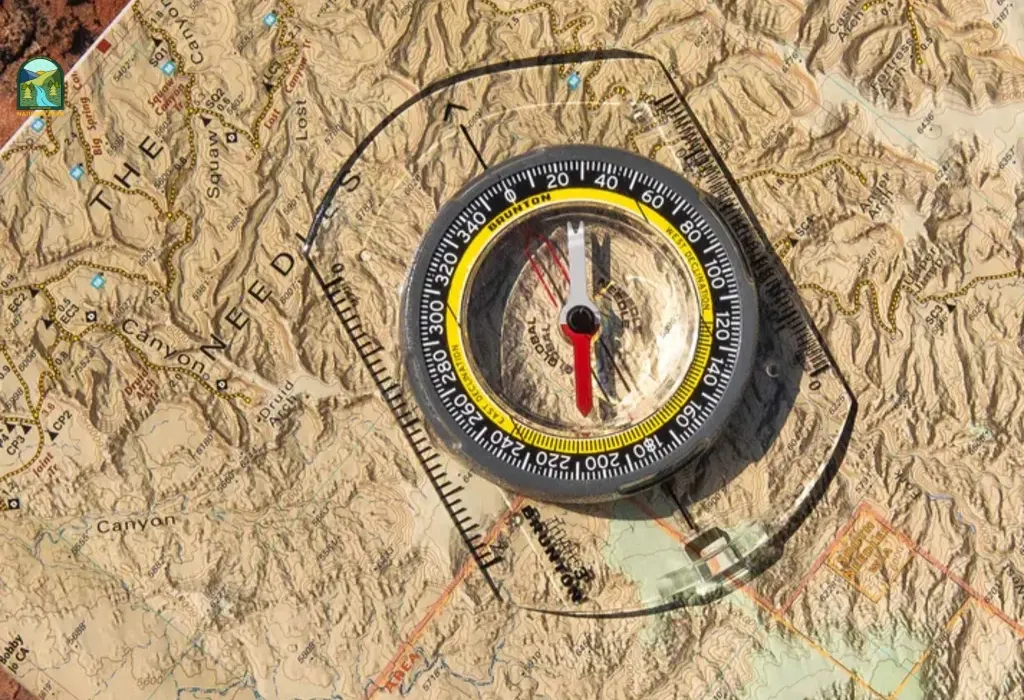
Affordable, reliable, precise, and compact compass featuring a global needle and adjustable declination. They are the compasses for beginners you’ll probably take with you everywhere. It may lack an abundance of features, but it includes all the essentials you need to navigate any landscape with your map. You can rely on this product to fulfill its purpose.
The TruArc 3 has been labeled as a training compass. I disagree with that characterization because such distinctions don’t really exist. While there are basic and advanced base plate compasses, this doesn’t mean that a compass is only suitable for novices or skilled navigators. Ultimately, land navigation is primarily a mental challenge, which is only slightly enhanced by gadgets beyond the essential tools: a good topographic map at a usable scale, a precise compass, and awareness of the local magnetic declination.
Best for Kids: Coghlan’s Function Whistle ($9.07 on Amazon)
- Material: Plastic
- Item Weight: 0.02 Pounds
- Item dimensions L x W x H: 3.35 x 1.18 x 0.98 inches
- Included Components: Four Function Whistle for Kids
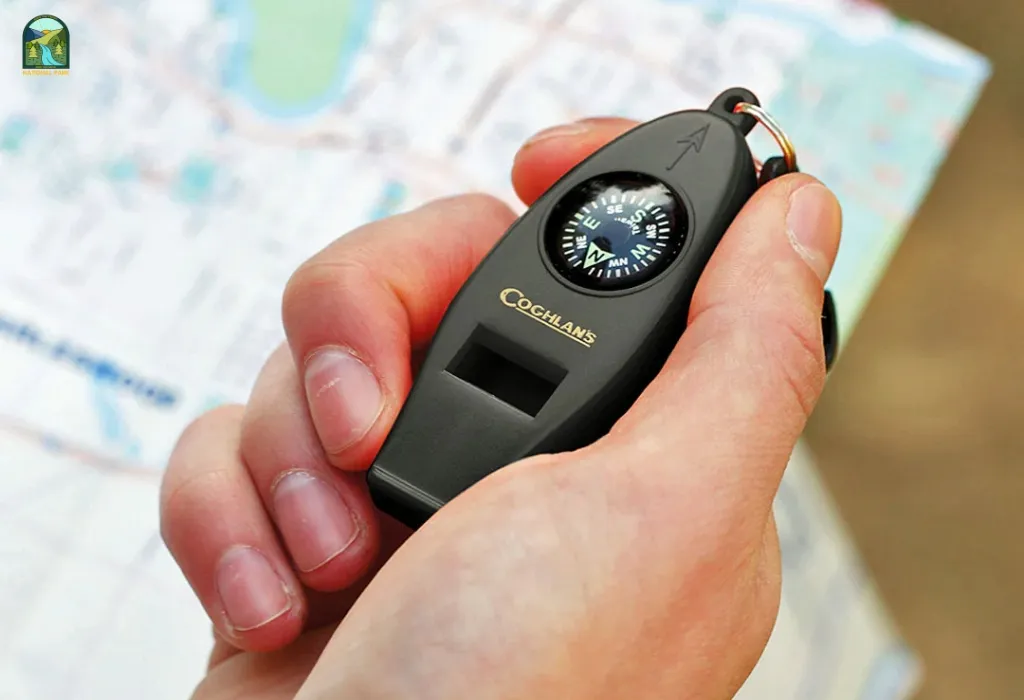
Monitoring a child during a camping trip requires constant attention. The Coghlan’s Function Whistle, priced at $7, is an excellent tool for ensuring your children’s safety and teaching them basic navigation skills if they stray too far from the campsite.
This compass features a whistle as its main body, with a small compass on top, a thermometer at the bottom, and a useful clip attached. Although simple, these compasses for beginners can locate magnetic north, enabling you to instruct your kids on identifying directions if they become disoriented.
Its bright yellow color makes it easy to spot if dropped, while the key clip reduces the chances of it falling. By attaching it to a zipper, it remains readily accessible.
A key feature of the Coghlan Function Whistle is the whistle itself, which helps in locating children if they get lost. Ensure they understand to use the whistle loudly, so you can quickly find them.
How we tested
The NationalParkShops team includes individuals who are hunters, climbers, backpackers, and paddlers. When we venture off the beaten path, dependable compasses become crucial tools.
We evaluated the compasses on this list while engaging in outdoor activities. Like all navigators, we favor models that are accurate, durable, and easy to use. While navigating between waypoints and maintaining long-distance bearings across open terrain, we meticulously assessed each product’s accuracy, durability, versatility, readability, and overall value. The compasses for beginners included here passed our evaluations exceptionally well. They represent the finest options available.
As new compasses are released in upcoming seasons, we will make sure to assess them for this product roundup.
FAQs
What is the purpose of a compass?
A compass is an essential navigation device that allows them to identify directions, follow paths, and orient themselves in unknown landscapes, promoting safe and precise outdoor adventures.
What types of compasses are suitable for hiking?
Different types of compasses, such as baseplate, mirror, lensatic, and wrist compasses, are appropriate for hiking. Each type has unique characteristics that meet various navigation preferences and needs.
Do I need a compass if I have a GPS device?
Although GPS devices are useful, it is crucial to have a compass as a secondary option. Compasses function without batteries and can offer dependable directional guidance in difficult situations where GPS signals might be weak or missing.
What is the best compass app?
Although compass apps may not be as precise as traditional compasses and depend on battery power, they offer great convenience. Most adventurers carry their phones, which come equipped with various features that a standard compass lacks, including barometers, altimeters, and GPS.
We recommend the Gaia GPS app (available for free on iOS and Android) due to its excellent map integration, which lets you access topographic maps, aerial imagery, or a combination of both. It also provides altitude information, enables you to share your location with others in case of emergencies, and tracks details such as speed, time, position, and direction. Additionally, it can provide an estimate of your GPS accuracy to alert you if you veer off your intended path.
How much does a good compass cost?
A basic compass with essential orienteering functions may start at around $10, while a more advanced compass equipped with a global needle, clinometer, mirror sight, and numerous additional features can exceed $100. When selecting the right compass for your needs, weigh the necessary features against your budget.

